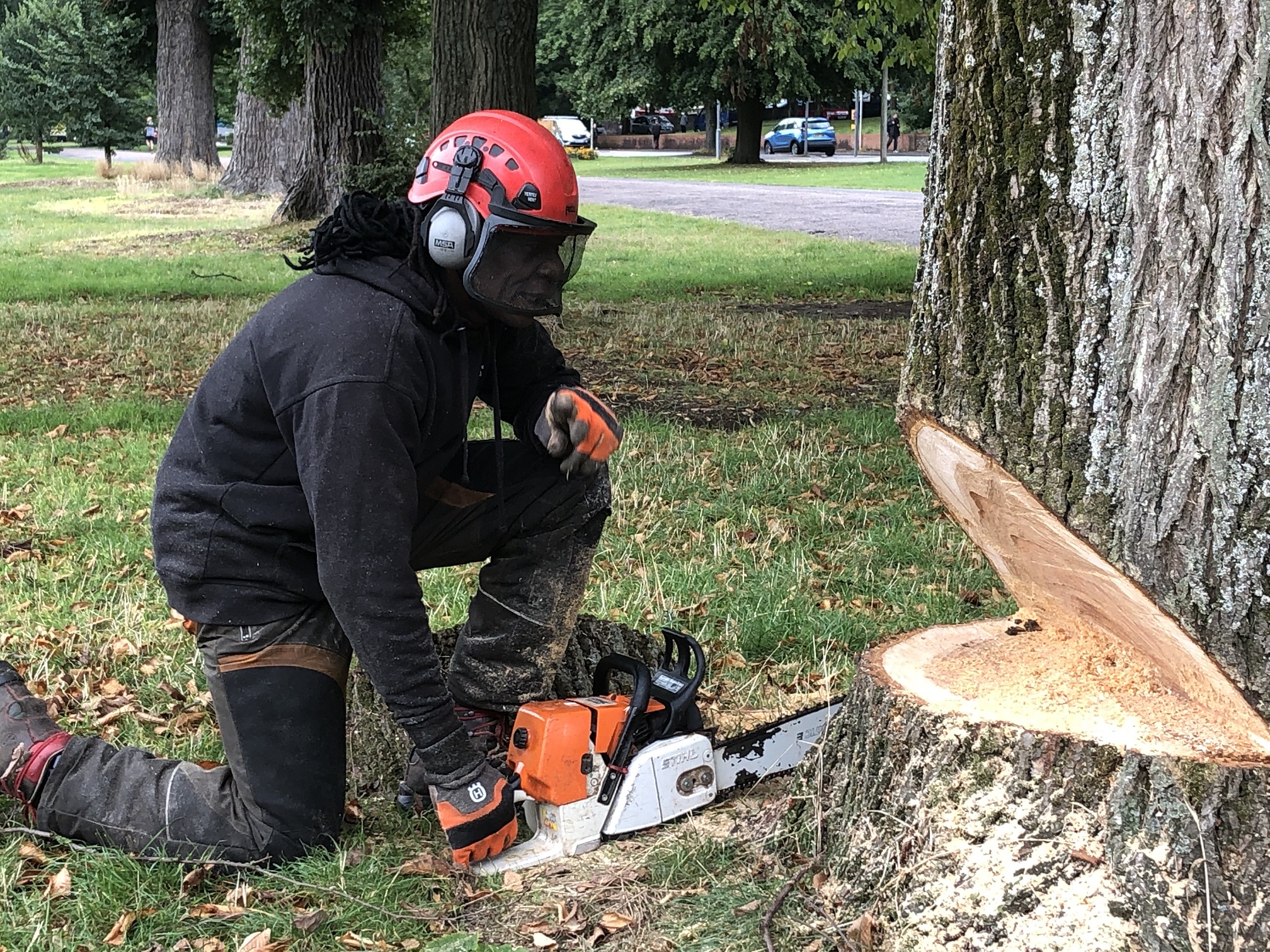Hundreds more trees in Brighton’s woodland are being felled in a bid to stop disease spreading.
Both ash dieback and elm disease have been found in Hollingbury Woods, Wild Park and Stanmer Park.
Brighton and Hove City Council says it is working closely with our contractors and monitor the work being done and will only fell trees where it is absolutely necessary.
It says while health trees do sometimes need to be removed to access those that are infected, this is always kept to a minimum and care is taken to avoid more mature trees.
Over the last year, the trees along Coldean Lane have also become heavily infected with elm disease and ash dieback.
Many of these trees have died and are in a state of serious decay; their proximity to the road and the path through the woodlands means they now present a significant danger to members of the public.
As there is a road closure already planned between 24 and 28 February, it makes sense to remove trees during this period to minimise disruption.
There are around 150 trees to be removed from the bluebell flats and Varley Hall.
Councillor Alan Robins, Cabinet member for Sports and Recreation, said: “We fully understand the concern and distress the felling work is causing, not least because in areas like Hollingbury Woods, the result can be a dramatic change in how parts of the woods look.
“The sad reality is that we must do this work to prevent the spread of disease to hundreds more trees.
“Our teams are working hard to ensure trees are only removed when we have no other option and we’ll be looking at all available options for replanting in the future.”










The difficulty is, that some trees are partially resistant to Ash Die Back. If you remove these, then the natural resistance to the bacterium is removed too. I hope that there are enough Ash saplings hidden from view, that will grow to adulthood. The Council must also replace the trees with other species or resistant varieties.
They did this process at Hawth Woods in Crawley. It took about a year.The contractors made no provision for the public to use the footpaths and complaining to Crawley Council fell on deaf ears.
Ash Die Back kills the tree and they become a danger. Elm trees, even healthy ones, live about 100 year meaning most in the city are near their natural life span, add to that DED and they won’t last.
In city street Elms should be replaced as soon as they are felled with Plain trees.
In parks and woods with native trees again as soon as the old trees are felled.
A big issue now is the replacements aren’t being planted!
There is no such thing as ‘Elm Disease’ it’s Dutch Elm Diseaae. Not sure why this mistake keeps being repeated in council press releases?
https://en.wikipedia.org/wiki/Dutch_elm_disease
Probably someone thought it would upset the Dutch!
Is a qualified tree surgeon certifying that each one is actually diseased before the chainsaw comes out? I am seeing a heck of a lot of healthy trees being felled, and even more criminally, not replaced.
Ironic considering the previous Labour Brighton and Hove City Council declared itself a city of ‘climate emergency’ in 2018
Yes a qualified person is doing the inspections.
And just because the trees look healthy on the outside doesn’t mean they are on the inside.
The trees will be replaced at the approriate time and that will be after the sick trees have been removed.
150 trees would absorb about 10kg of CO2 per year totalling about one-quarter the amount generated by 1 resident.
Trees die and as long as they are replanted (and ideally the old trees are not burnt releasing CO2 back into the atmosphere) I’m not too concerned.
To really solve the climate emergency requires a lot more work and the council had only been targeting the 2% of the total city’s emissions that apply to them.
I recall it was our clueless Green friends that got Labour to agree to the declaration as part of the coalition agreement.